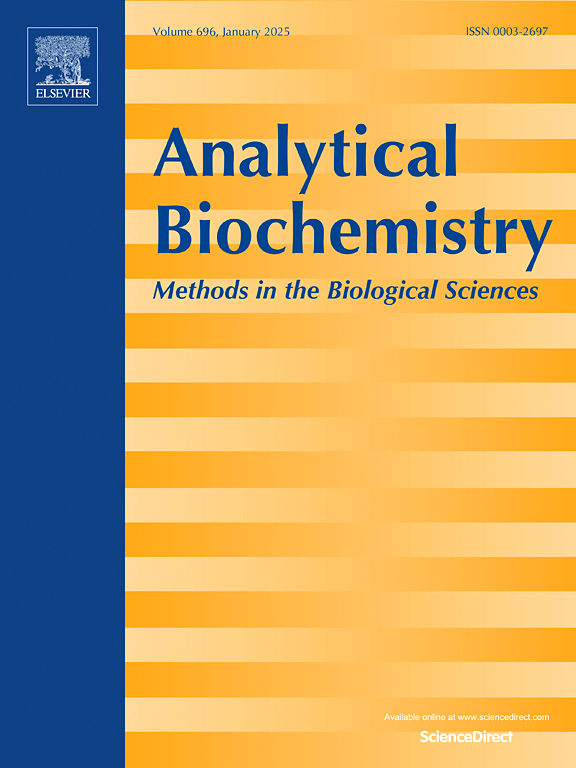ITGB3 as a promising non-invasive biomarker for type 2 diabetes and diabetic nephropathy
IF 2.5
4区 生物学
Q2 BIOCHEMICAL RESEARCH METHODS
引用次数: 0
Abstract
The prevalence of Type 2 diabetes mellitus (T2DM) is increasing worldwide and represents a major risk factor for the development of diabetic nephropathy (DN), a severe microvascular complication. Chronic hyperglycemia activates inflammatory and fibrotic signaling pathways, which contribute to kidney damage. Integrins, as transmembrane adhesion receptors, play pivotal roles in regulating inflammation, immune cell trafficking, and insulin resistance. This research focused on identifying non-invasive biomarkers for T2DM and DN using PBMCs. Differentially expressed genes related to diabetes were identified through the analysis of multiple datasets retrieved from the Gene Expression Omnibus, including GSE95849, GSE9006, GSE25724, and GSE159984. ITGB3 was identified as a common gene across these datasets, and its expression in DN was further examined using the GSE142025 dataset. Real-time PCR analysis of PBMC samples revealed a significant upregulation of ITGB3 expression in individuals with DN and T2DM compared to healthy controls. The TF2DNA and miRNASNPv3 databases identified 10 transcription factors and 10 variants of ITGB3 involved in 60 miRNA interactions. Additionally, the DGIdb database revealed 15 drugs potentially regulating ITGB3 expression. These findings underscore the importance of integrin-related pathways in diabetes and suggest ITGB3 as a promising target for future research and therapeutic development.

ITGB3有望成为2型糖尿病和糖尿病肾病的无创生物标志物
2型糖尿病(T2DM)的患病率在全球范围内呈上升趋势,是糖尿病肾病(DN)发展的主要危险因素,是一种严重的微血管并发症。慢性高血糖会激活炎症和纤维化信号通路,从而导致肾脏损伤。整合素作为跨膜粘附受体,在调节炎症、免疫细胞运输和胰岛素抵抗中起关键作用。本研究的重点是利用pbmc识别T2DM和DN的非侵入性生物标志物。通过分析从Gene Expression Omnibus检索到的多个数据集,包括GSE95849、GSE9006、GSE25724和GSE159984,鉴定出与糖尿病相关的差异表达基因。ITGB3被鉴定为这些数据集中的共同基因,并使用GSE142025数据集进一步检测其在DN中的表达。PBMC样本的实时PCR分析显示,与健康对照相比,DN和T2DM患者的ITGB3表达显著上调。TF2DNA和miRNASNPv3数据库鉴定了参与60种miRNA相互作用的10个转录因子和10个ITGB3变体。此外,DGIdb数据库还发现了15种可能调节ITGB3表达的药物。这些发现强调了整合素相关通路在糖尿病中的重要性,并表明ITGB3是未来研究和治疗开发的有希望的靶点。
本文章由计算机程序翻译,如有差异,请以英文原文为准。
求助全文
约1分钟内获得全文
求助全文
来源期刊

Analytical biochemistry
生物-分析化学
CiteScore
5.70
自引率
0.00%
发文量
283
审稿时长
44 days
期刊介绍:
The journal''s title Analytical Biochemistry: Methods in the Biological Sciences declares its broad scope: methods for the basic biological sciences that include biochemistry, molecular genetics, cell biology, proteomics, immunology, bioinformatics and wherever the frontiers of research take the field.
The emphasis is on methods from the strictly analytical to the more preparative that would include novel approaches to protein purification as well as improvements in cell and organ culture. The actual techniques are equally inclusive ranging from aptamers to zymology.
The journal has been particularly active in:
-Analytical techniques for biological molecules-
Aptamer selection and utilization-
Biosensors-
Chromatography-
Cloning, sequencing and mutagenesis-
Electrochemical methods-
Electrophoresis-
Enzyme characterization methods-
Immunological approaches-
Mass spectrometry of proteins and nucleic acids-
Metabolomics-
Nano level techniques-
Optical spectroscopy in all its forms.
The journal is reluctant to include most drug and strictly clinical studies as there are more suitable publication platforms for these types of papers.
 求助内容:
求助内容: 应助结果提醒方式:
应助结果提醒方式:


